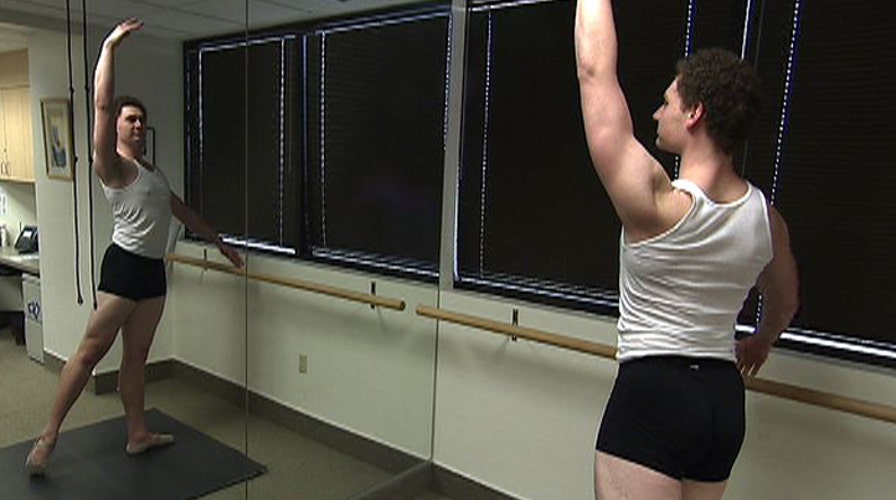Rare ankle surgery gets dancer back on his toes
Matthew Leonardi was well on his way to an impressive ballet career when a rare and mysterious ankle injury almost ended it. We tell you how one orthopedic surgeon took him under the knife to cure his condition and get him back on stage
Matthew Leonardi, 19, has been dancing since he was 4 years old.
"I love expressing myself only through body language,” Leonardi, a San Bernardino, Calif. native, said.
“Just the turns and the jumping and the athleticism and art: It's just fantastic, like a great combination, and that's what I love about it.”
By the time he was 14, Leonardi was well on his way to building a promising career in ballet – until he started experiencing a strange, painful sensation in his ankle.
"I couldn't point [my foot]. It felt like something was blocking it and I didn't have that great flexibility of pointing and flexing,” Leonardi said. “I started noticing the pain got worse; it kept getting worse throughout the years, and it finally felt like it was on fire and whenever I point there was glass in my foot, and it kept that constant stabbing pain whenever I pointed."
When X-rays came back normal, doctors were convinced nothing was wrong with Leonardi’s ankle.
"Each one of them said, ‘Oh it's a sprain,’ or, ‘It's broken,’ or, ‘There's nothing wrong with it.’ I was in a cast for two months and I got out of the cast and it was still hurting," he said.
Leonardi was desperate for an answer when his ballet teacher told him about Dr. Glenn Pfeffer, an orthopedic surgeon and co-director of the USC Glorya Kaufman Dance Medicine Center at Cedars-Sinai Medical Center in Los Angeles.
Pfeffer immediately diagnosed Leonardi with os trigonum syndrome – a rare condition in which an excess bone in the ankle is crushed by an injury.
"The os trigonum is a separate bone in the back of the ankle. It’s there because it didn't join to the rest of the ankle joint during development,” Pfeffer said, noting that only 5 percent of people have an os trigonum bone.
Os trigonum syndrome is a rare injury which occurs when the leg and the foot act like a nutcracker, crushing the pea-sized bone and causing severe pain. The condition is most common in dancers who are constantly pointing their feet.
Pfeffer says the problem is often missed because cartilage surrounding the os trigonum means it's only visible on a high quality MRI.
The good news is once patients have a diagnosis; it can be corrected through surgery.
"The surgery is simply removing the bone. It can either be done through a small incision or arthroscopically with a minimum incision,” Pfeffer said. “Once the bone is out, the foot can go down, the ankle can go down, and the bone doesn't get crushed anymore, and the pain is gone."
Leonardi was on bed rest for three weeks after surgery, and felt a difference in his ankle right away.
Now he is pain-free and his ballet career is back on track – poising him to become a world-renowned dancer.
"Recovery was great. I started pointing and flexing again, like nothing happened, like there was nothing wrong with it, and I was just like, ‘Oh my gosh, he saved my career,’” Leonardi said.
Click here for more information about the Cedars-Sinai/USC Glorya Kaufman Dance Medicine Center.

